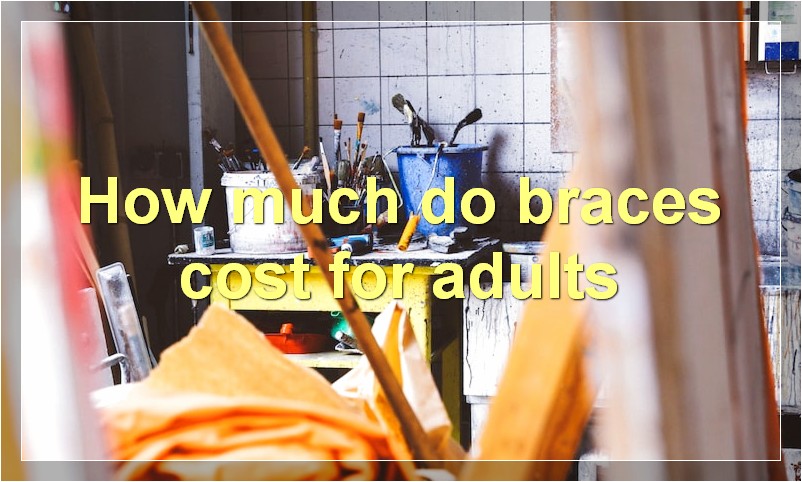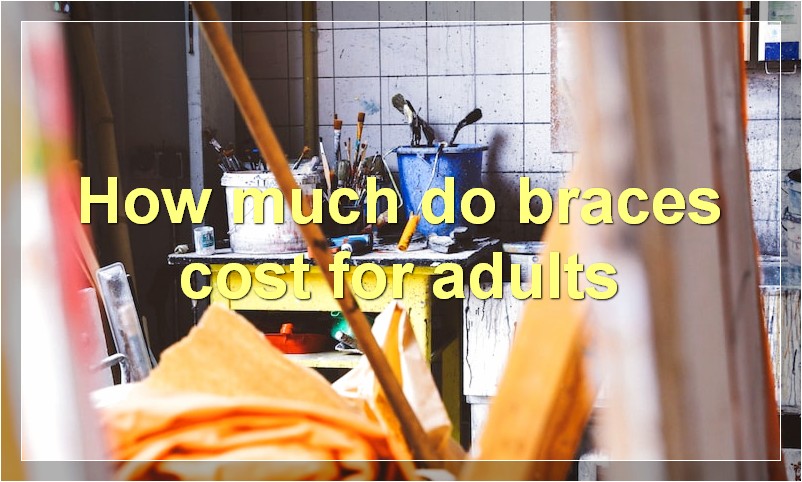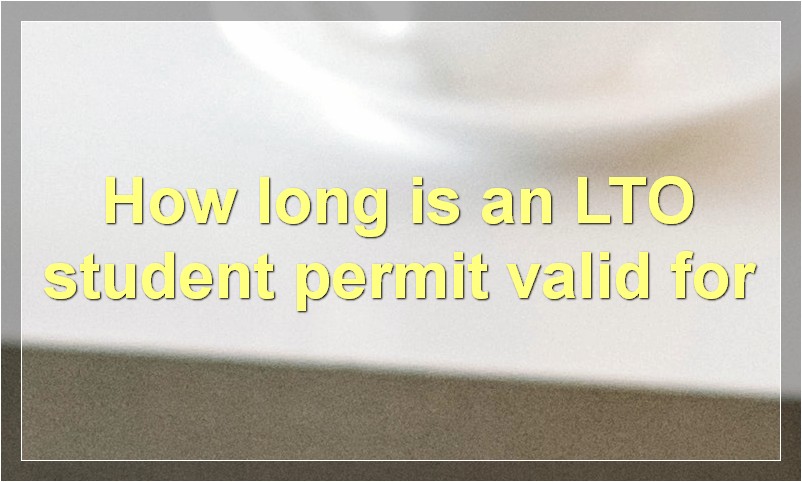For many people, braces are an important step in achieving a healthy, beautiful smile. But how much do they actually cost? The average cost of braces in the United States is $5,000, but the price can range anywhere from $2,500 to $10,000. There are many factors that affect the cost of braces, such as the type of braces, the severity of the bite problem, and the length of time the braces are worn. If you or your child is considering braces, it’s important to understand all of the costs involved so you can make the best decision for your family.
What is the average cost of braces?
The average cost of braces can vary depending on the type of braces you choose and the severity of your dental condition. Traditional metal braces typically cost between $2,500 and $5,000, while clear ceramic braces may cost between $3,500 and $6,000. Invisalign aligners can also vary in price depending on your treatment plan, but typically range from $3,500 to $8,000.
How much do braces cost for adults?

The cost of braces can range from a few hundred dollars to a few thousand dollars, depending on the type of braces you choose and the severity of your orthodontic needs. For adults, the most common type of braces are metal braces, which typically range in price from $2,500 to $6,000. If you have a more complex orthodontic case, you may need to consider other types of braces, such as ceramic braces or lingual braces, which can cost between $3,000 and $10,000. In some cases, your insurance may cover part of the cost of your braces.
How much do braces cost for children?
The average cost of braces for children is $4,000 to $5,000. This does not include the cost of dental visits or other treatments associated with braces.
Does insurance cover the cost of braces?
Does insurance cover the cost of braces?
It’s a question that’s often on the minds of parents and patients alike – after all, orthodontic treatment can be expensive. The good news is that in many cases, insurance does cover the cost of braces – but there are a few things you should know before you make your appointment.
To start with, it’s important to understand that there are two types of braces: medical and cosmetic. Medical braces are used to correct problems with alignment, bite, or jaw function, while cosmetic braces are purely for esthetic purposes. In most cases, insurance will only cover the cost of medical braces – but there are some exceptions.
If your child is still growing, their bones may be too soft for braces to be effective. In this case, your orthodontist may recommend a palatal expander. This device is used to gradually widen the palate, making room for the adult teeth. Palatal expanders are considered medical devices, and as such, they are usually covered by insurance.
Another common type of orthodontic treatment is Invisalign. Unlike traditional braces, Invisalign uses clear plastic aligners to slowly straighten teeth over time. Because Invisalign is not technically a brace, it’s not always covered by insurance. However, some orthodontists will submit a “predetermination of benefits” to your insurance company before treatment begins. This will give you an idea of whether or not your plan will cover the cost.
Finally, it’s important to remember that even if your insurance does cover the cost of braces, there may be some out-of-pocket expenses. Most plans have a deductible that must be met before coverage kicks in, and some also require a co-pay for each office visit. Be sure to check with your insurer ahead of time to get an estimate of what you can expect to pay.
In short, there’s no simple answer to the question “does insurance cover the cost of braces?” It depends on your individual policy and the type of treatment you’re seeking. However, in many cases insurance will at least partially cover the cost – so it’s definitely worth looking into if you’re considering orthodontic treatment for yourself or your child.
What are the different types of braces and their costs?
There are a few different types of braces that an orthodontist can recommend, each with their own unique benefits. The cost of braces will vary depending on the type of braces you choose and the severity of your case, but we’ve provided a general overview of the average cost of each type of braces below.
Metal Braces: Metal braces are the most common type of braces and are also the most affordable. They are made of high-grade stainless steel and are very strong and durable. The average cost of metal braces is $3,000 – $7,000.
Ceramic Braces: Ceramic braces are made of clear or tooth-colored brackets and are less visible than metal braces. They are ideal for patients who are concerned about the appearance of their braces. The average cost of ceramic braces is $4,000 – $8,000.
Lingual Braces: Lingual braces are similar to metal braces, but they are placed on the back side of your teeth so they are not visible. They are ideal for patients who are concerned about the appearance of their braces. The average cost of lingual braces is $8,000 – $10,000.
Invisalign: Invisalign is a popular alternative to traditional braces that uses clear, removable aligners to straighten teeth. Invisalign is virtually invisible and can be removed for eating and brushing your teeth. The average cost of Invisalign is $5,000 – $7,000.
What are the benefits of braces?

The thought of having to wear braces may not be the most pleasant for some. But the good news is that there are benefits of braces that go beyond just a pretty smile. Here are some things you may not have known:
1. Better Digestion
Did you know that poorly aligned teeth can cause problems with your digestion? It’s true! When your teeth are properly aligned, it helps with the chewing process which in turn aids in the breaking down of food and makes it easier for your stomach to do its job.
2. Decreased Risk of Injury
If you have ever had a tooth knocked out, you know how painful it can be – not to mention expensive to fix. By wearing braces, you can decrease your risk of injury to your teeth since they will be better protected.
3. Improved Speech
If you have trouble pronouncing certain words or have a lisp, braces can help with that. By aligning your teeth, you can improve your speech and clarity.
4. Boost in Self-esteem
It’s no secret that having a great smile can increase your confidence. Wearing braces and knowing that your teeth will look their best once they are removed can give you a much-needed boost in self-esteem, especially during those awkward teenage years.
5. Better Oral Health Overall
When your teeth are properly aligned, it is easier to keep them clean which leads to better oral health overall. This means less cavities, less gum disease, and fresher breath. So not only will you have a beautiful smile, but you’ll also have a healthier mouth!
Are there any risks associated with getting braces?
It’s no secret that getting braces can be a bit of a pain -literally. But, while you may have to endure a little discomfort during the process, it’s important to remember that there are also potential risks associated with getting braces. Here are a few things you should keep in mind before you head to the orthodontist:
Infection: One of the most serious risks associated with getting braces is the potential for infection. This can occur if the brackets or wires cut into your gums or if bacteria gets trapped in the hardware. To help avoid infection, be sure to practice good oral hygiene and see your orthodontist for regular cleanings.
Allergic Reaction: Another potential risk is an allergic reaction to the materials used in braces. While this is rare, it’s important to be aware of the possibility and to consult with your orthodontist beforehand if you have any concerns.
Damage to Teeth: In some cases, braces can actually damage the teeth they’re meant to protect. This usually occurs when the braces put too much pressure on the teeth or when they rub against the gum tissue. Be sure to see your orthodontist regularly so that any problems can be caught early and corrected.
As you can see, there are a few potential risks associated with getting braces. However, these risks can be minimized by working closely with your orthodontist and practicing good oral hygiene. So, if you’re considering braces, don’t let the risks scare you off – just be sure to talk to your orthodontist first and make sure you’re well informed about what to expect.
How long does it take to get braces?
You may have seen ads promising “braces in one day” or “braces while you sleep.” Unfortunately, these slogans are usually more marketing hype than reality. It typically takes anywhere from one to two years to complete treatment with braces, although this varies depending on the severity of the misalignment.
That said, there are some new developments in orthodontic technology that can significantly reduce treatment time. One such innovation is called accelerated orthodontics, which uses special techniques and appliances to move teeth more quickly.
If you’re considering braces, the best way to determine how long your treatment will take is to consult with an experienced orthodontist. During your initial consultation, your orthodontist will conduct a thorough examination of your mouth and teeth and develop a personalized treatment plan.
How often do you need to see the orthodontist once you have braces?
If you have braces, you will need to see the orthodontist every four to six weeks so they can check your progress and make any necessary adjustments. In between appointments, it is important to brush and floss regularly and avoid foods that can damage your braces.
What are some tips for taking care of your braces?
If you’re one of the millions of Americans who currently have braces, congratulations! You’re on your way to achieving the smile of your dreams. But before you can enjoy your new look, you’ll need to take some special steps to take care of your braces and ensure that they stay in tip-top shape. Here are a few tips to get you started:
1.brush twice a day: It’s important to brush your teeth at least twice a day when you have braces, paying special attention to the areas around your brackets and wires. Use a soft-bristled toothbrush and be sure to floss at least once a day.
2. Avoid hard foods: Eating hard foods can damage your braces, so it’s important to avoid them as much as possible. Stick to softer foods like cooked vegetables, fruits, yogurt, and cheese.
3. Be careful with gum: Chewing gum is a no-no when you have braces because it can stick to your brackets and wires, making them difficult to clean. If you must chew gum, be sure to choose a sugar-free variety.
4. Protect your teeth: Playing sports or participating in other activities that involve contact with hard objects can damage your braces, so it’s important to take precautions. Wear a mouthguard when playing sports or engaging in any activity where there is a risk of injury to the mouth.
5. Visit your orthodontist regularly: In order to keep your braces in good condition, it’s important to visit your orthodontist for regular checkups and adjustments. This will ensure that your braces are working properly and that your treatment is on track.




